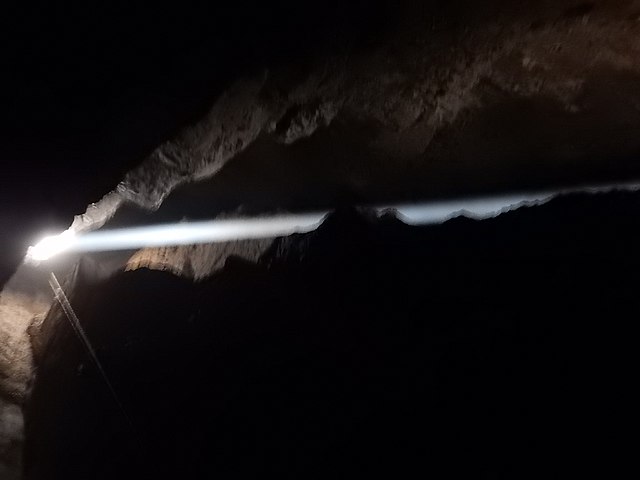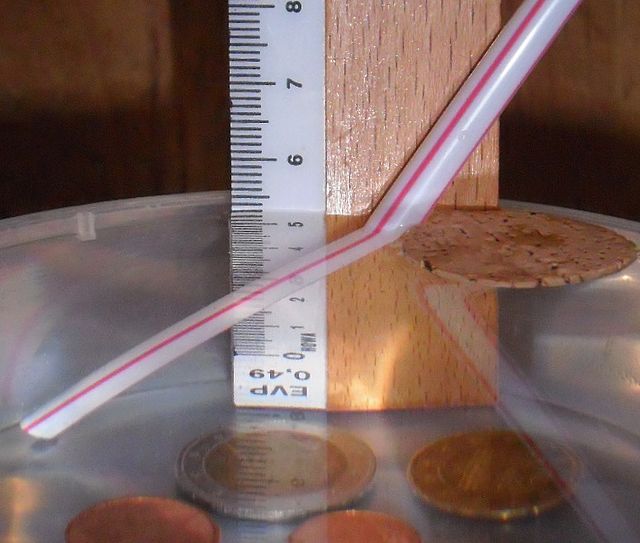Fluorescence is one of two kinds of emission of light by a substance that has absorbed light or other electromagnetic radiation. Fluorescence involves no change in electron spin multiplicity and generally it immediately follows absorption; phosphorescence involves spin change and is delayed. Thus fluorescent materials generally cease to glow nearly immediately when the radiation source stops, while phosphorescent materials, which continue to emit light for some time after.
Fluorescent minerals emit visible light when exposed to ultraviolet.
Fluorescent marine organisms
Fluorescent clothes used in black light theater production, Prague
A cup made from the wood of the narra tree (Pterocarpus indicus) beside a flask containing its fluorescent solution Lignum nephriticum.
Light, visible light, or visible radiation is electromagnetic radiation that can be perceived by the human eye. Visible light spans the visible spectrum and is usually defined as having wavelengths in the range of 400–700 nanometres (nm), corresponding to frequencies of 750–420 terahertz. The visible band sits adjacent to the infrared and the ultraviolet, called collectively optical radiation.
A triangular prism dispersing a beam of white light. The longer wavelengths (red) and the shorter wavelengths (green-blue) are separated.
Beam of sun light inside the cavity of Rocca ill'Abissu at Fondachelli-Fantina, Sicily
Due to refraction, the straw dipped in water appears bent and the ruler scale compressed when viewed from a shallow angle.
Hong Kong illuminated by colourful artificial lighting








